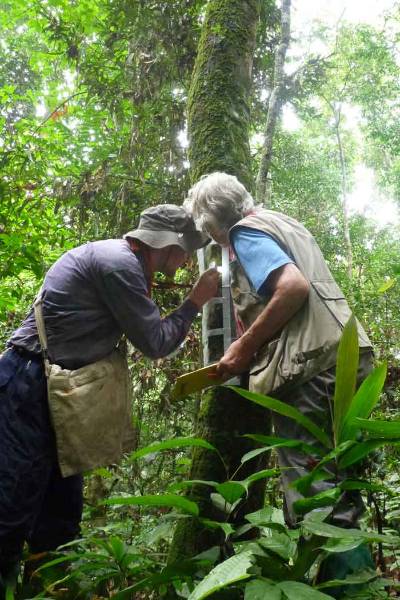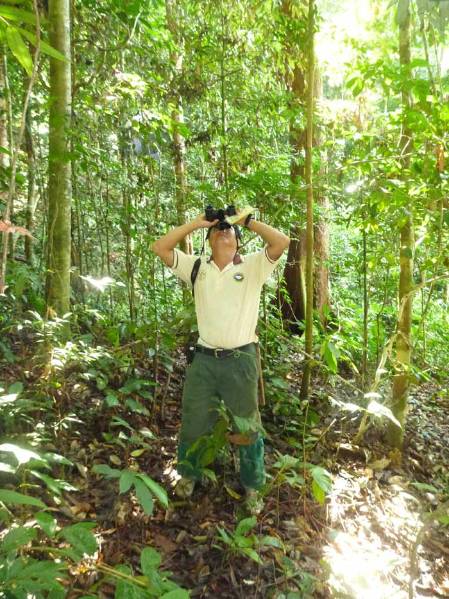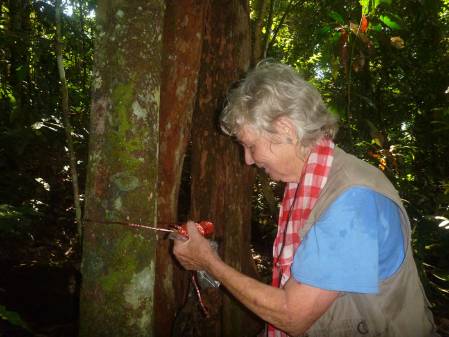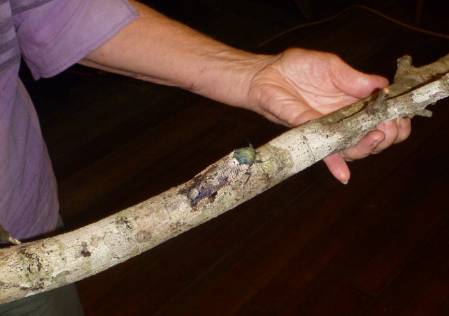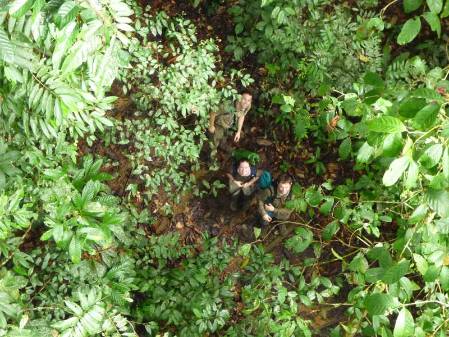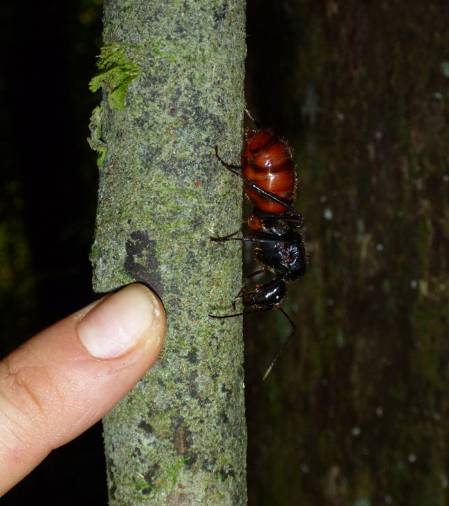Another day, another site. We’re over half way through our time here, and Dan’s pretty happy with how things have been going. The team have learnt how to position their pitfall traps so that they don’t fill up with rainwater and sediment in the extremely wet conditions of the rainforest (far less of a problem in the New Forest where they’ve been sampling for the past ten years and using the same trapping methods).
Kieron reveals the contents of his Pitfall trap…including a cockroach.
At previous sample sites, the team have also had to contend with animals stealing their Pitfall traps (pigs are the main suspect). There are some things you can’t always plan for when carrying out experiments!
Pat and Holger take a closer look at the lichens on the tree.
The lichenologists, Pat and Holger, were hard at work today. As with every day, they came out to the sample site with us and were studying the lichens on the trees. At each site, they choose twelve trees to study and sample from. These are a mixture of small and large trees and are a variety of different species, all factors that can influence the species of lichen living on the bark.
Local botanist Mr Kho Ju Ming helps Pat and Holger identify the different species of trees. He has to use binoculars to see the leaves clearly (which will help him identify the tree) because they are so high up!
Lichens are fascinating. They are composite systems (comparable to corals), meaning they are a combination of a fungus and an algae living side by side in a symbiotic relationship (they both benefit from one another). Lichens occur almost everywhere, surviving in some of the most extreme environments in the world. They are abundant and diverse in rainforests, and there are many to be found here in Maliau.
Pat ties a piece of string around a tree that is to be sampled.
Once Pat and Holger have selected the trees they are going to study, they set up a ladder quadrat on the trunk and begin to identify the lichens. If they find a lichen they need to check in the laboratory, they write a brief description of it and give it a field nickname. For example, Pat and Holger have given one of the lichens the nickname Herpothallon ‘woolly’.
Pat and Holger explain how they study and sample the lichens on trees.
There are many animals that have evolved similar colours and patterning to lichens, helping them to avoid predators. This moth we found, although large, can easily go unnoticed resting against the lichen.
A night-time visitor to the Studies Centre.
It can be hard to get a good view of the rainforest when you’re walking along the ground, the tree canopy is very far above. To get a slightly better view, Tony and I went up onto the ‘Sky Bridge’, near the edge of the forest. It requires a good head for heights, in places reaching 21 metres above the ground. But this is still only a fraction of the height of many of the trees here in Maliau, some of which reach up to 70 metres.
The Sky Bridge allows you to get closer to the forest canopy, although still not that close!
Tony and I had a bird’s eye view of Dan, Kerry and Kieron from the canopy walk.
Finally, remember the massive ant in one of yesterday’s videos? Well, today we found something even bigger – possibly a Queen ant of the same species (Camponotus gigas) but a lot bigger than the workers we usually see around the forest floor. Huge!
Possibly a Queen Ant of the species Camponotus gigas.




